Aperol’s distinctive marketing serves up growth
As sunny days become more common, even in the UK, an Aperol Spritz is one of my top tipples. The distinctive orange drink, in case you don’t know it, is a mix of Aperol and prosseco with a splash of soda water. And it seems I’m not the only one to like an Aperol or two. Sales quadrupled in the eight years up to 2022 (1) and grew strongly last year by +23%. Brand owner Campari recently announced that it was doubling production capacity to keep up with global demand (2).
In this post we look at how the Aperol brand has served up such a tasty cocktail of brand-led growth.
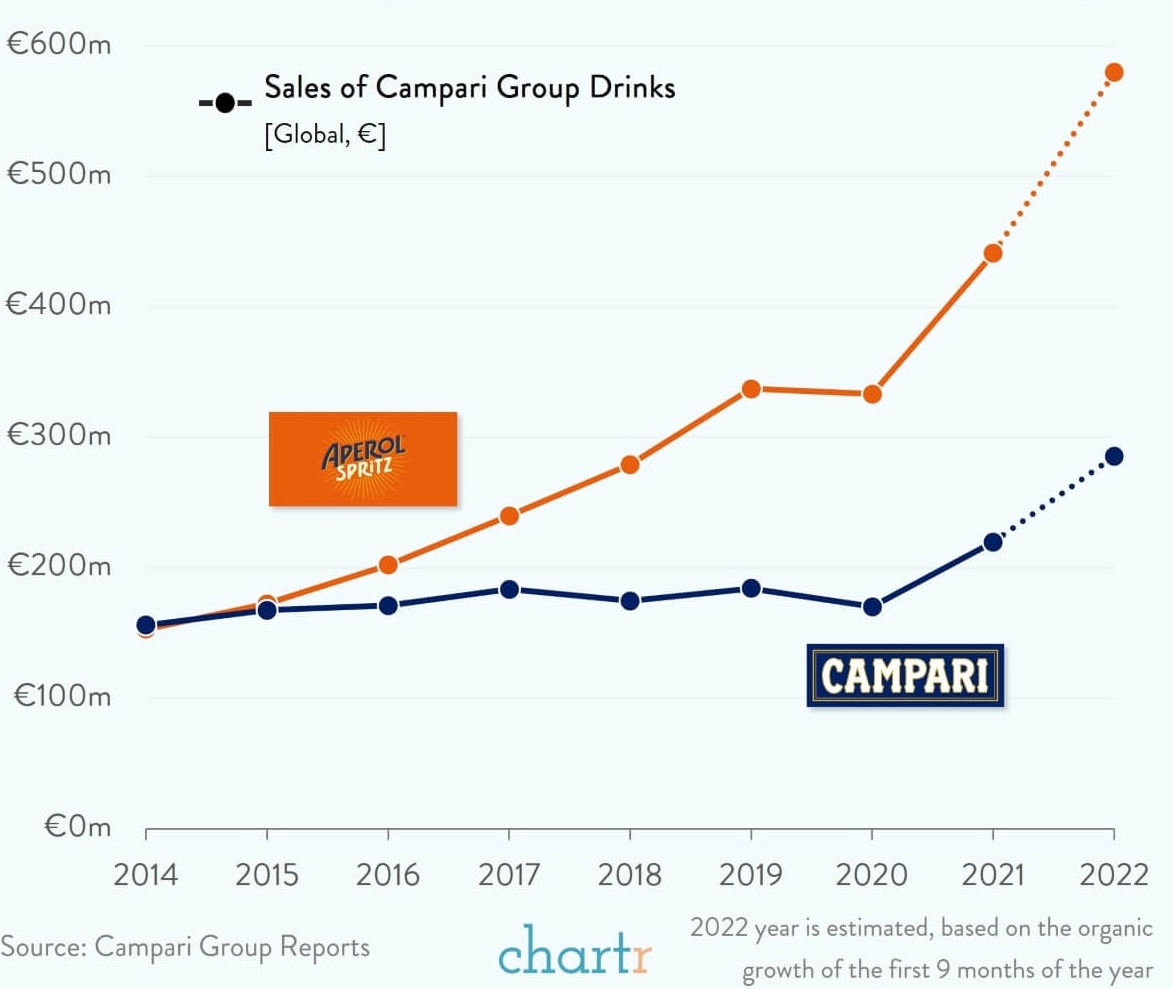
1. Amplify your distinctive brand assets
There can’t be many better examples of how to boldly and consistently amplify a brand’s distinctive assets than Aperol Spritz. The orange colour of Aperol plays a central role in all the brand’s communication, along with the blue logo and the bottle. The colour is also used in experiential marketing and in point-of-consumption marketing in the on-trade, such as umbrellas and seats.
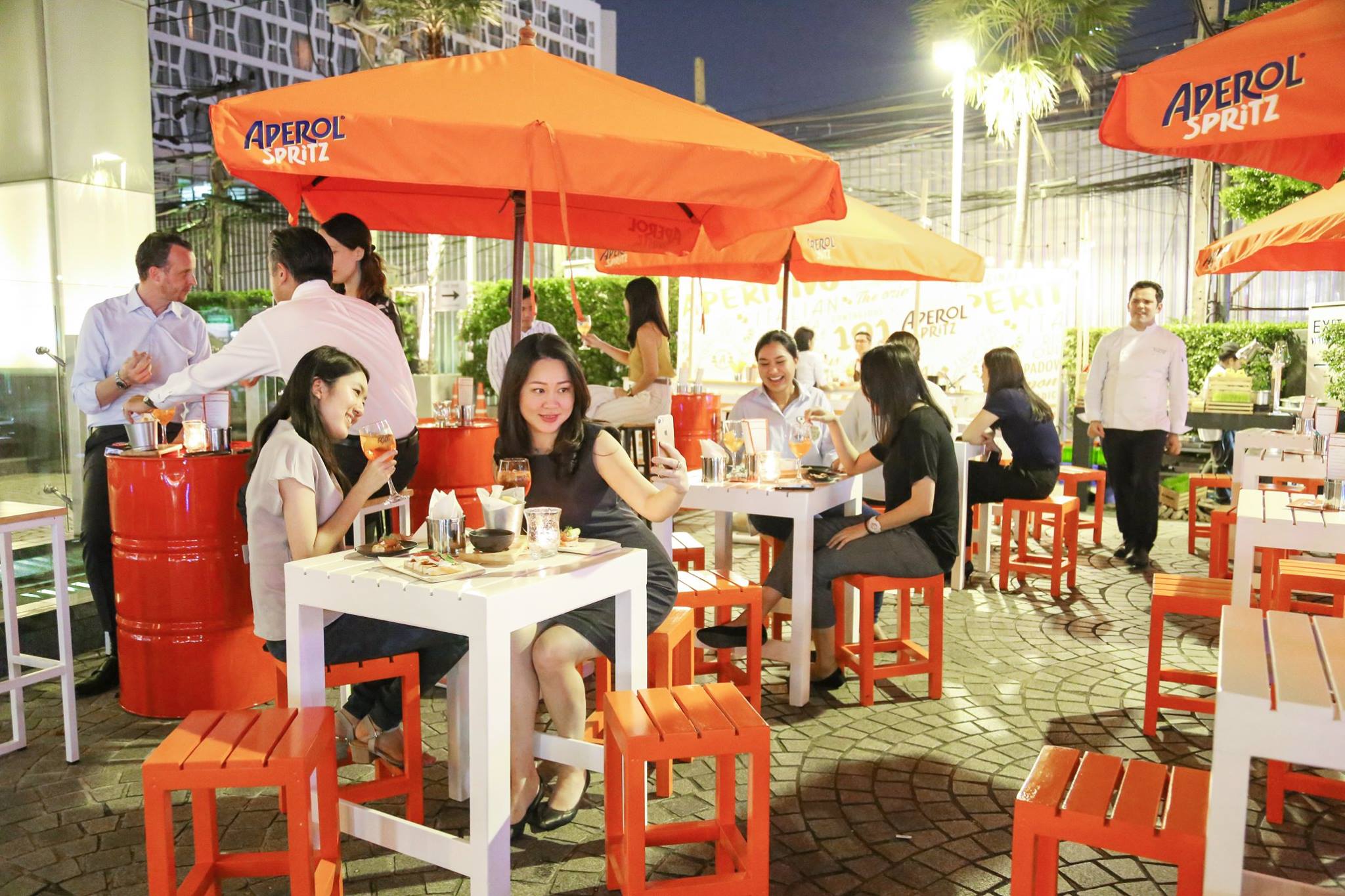
2. Drive awareness and penetration
The Aperol team have a clear focus on driving awareness and trial, based on a UK case study I dug up from 2019 (3). Investment was initially focused geographically, with the objective to “turn three key cities orange.” To drive awareness, good old outdoor advertising played a key role. This campaign won’t have won any prizes for creativity at Cannes. But boy was it effective at doing two things. First, it amplified the brand’s distinctive bottle and linked it to the first drink of the night, with the slogan “It starts with Aperol Spritz”. I like the way the agency involved called this campaign “unmissable outdoor”. Second, the campaign drove awareness of how to make the drink, with the slogan “The perfect serve” and simple serving instructions. Outdoor ads in places with higher “dwell time”, such as Underground stations, featured ads with more text to explain the drink’s origins.
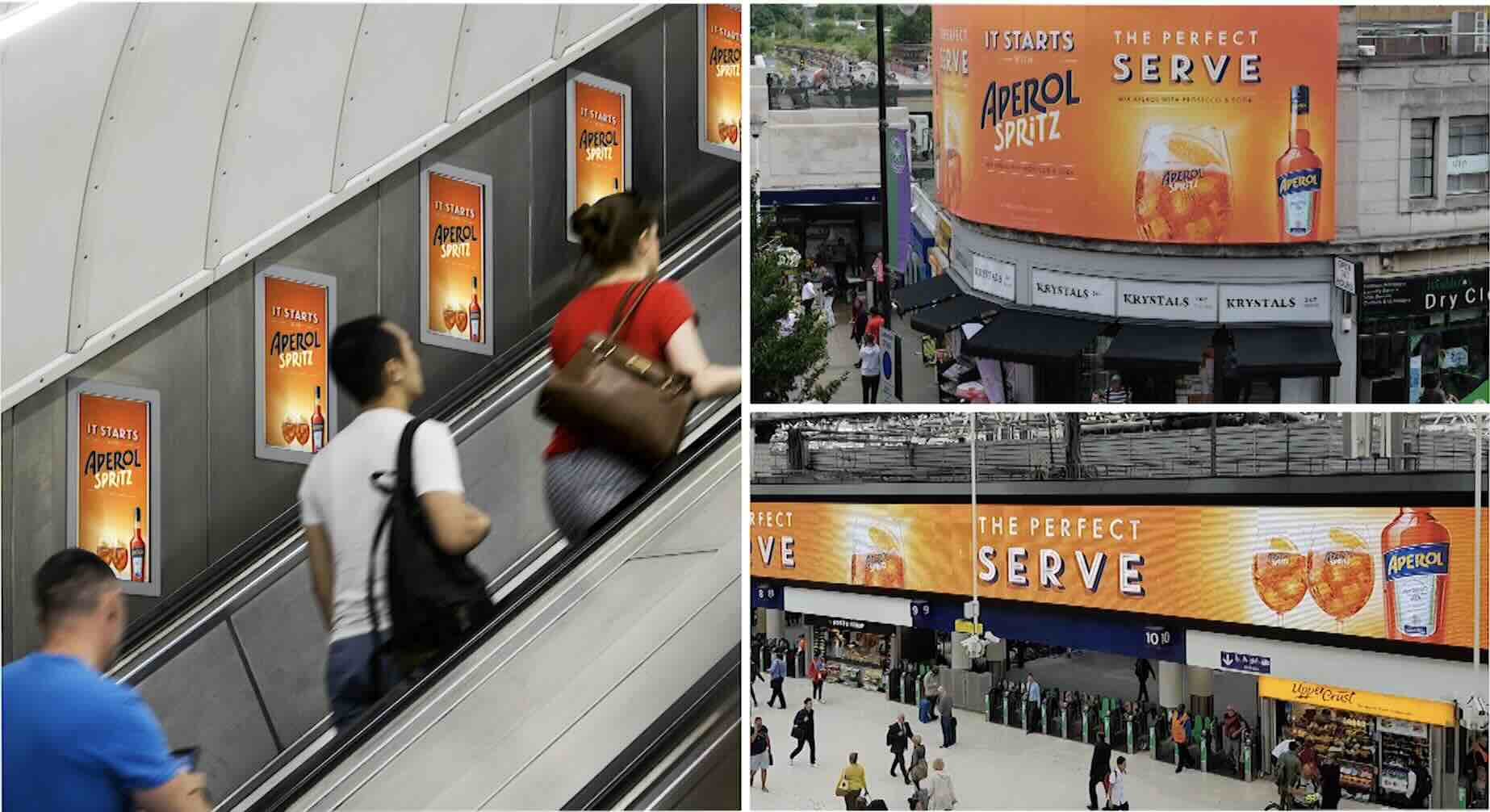
The outdoor campaign harnessed digital technology and smart media planning to drive relevance. Dynamic executions were used to target specific days, times and locations (see below).
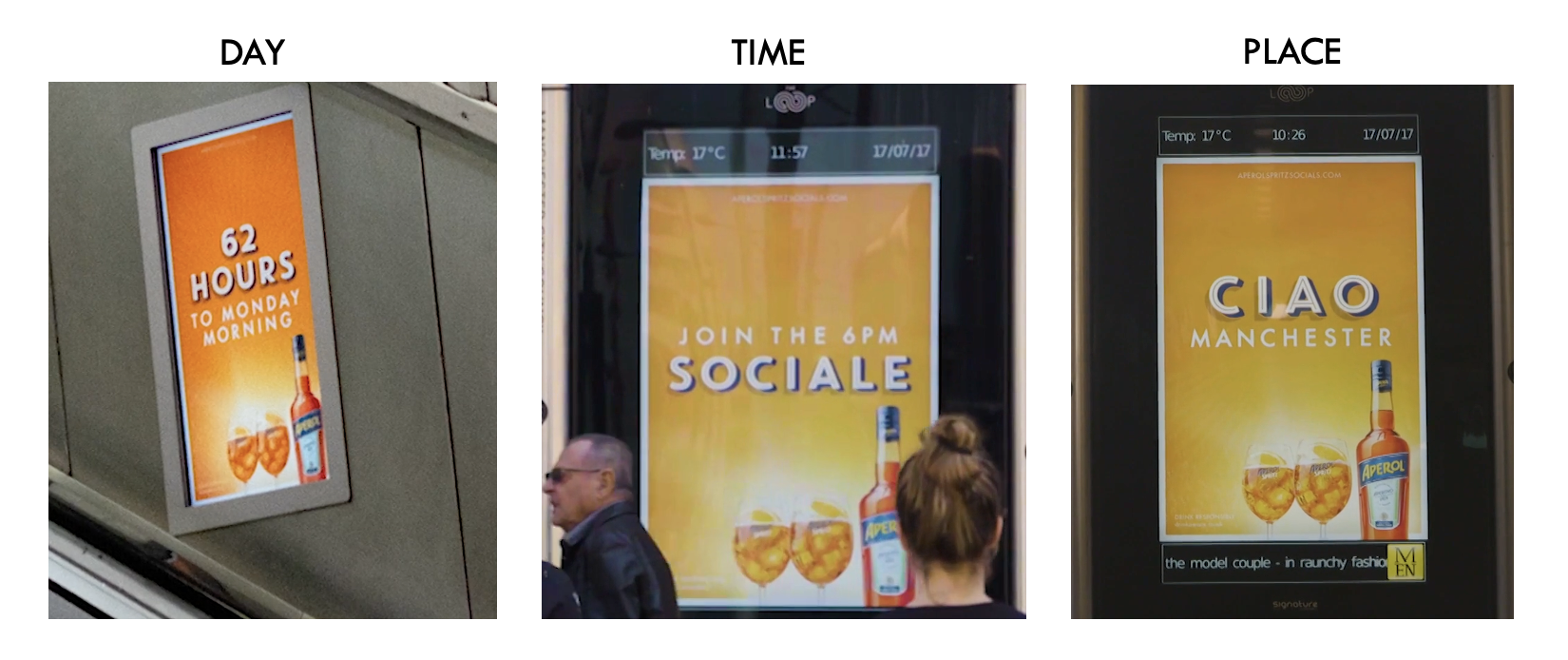
3. Create a brand experience
Aperol has not only driven awareness of its distinctive visual assets to boost recognition. It has also managed to “load” these brand assets with meaning, in the same way Veueve Clicquot has done with its use of orange/yellow. In the case of Aperol, the brand has captured and brought to life an Italian lifestyle linked to the consumption moment. Brand experiences included pop-up bars featuring Vespa seating, fresh orange displays showcasing the best of Italian style and staffing with Italians who knew the brand firsthand. “Not only did they serve to bring the authentic Mediterranean vibe to the occasion,” a case study by agency BD Network explains (4). “They were the natural advocates we needed to charm and educate customers and outlet staff alike.”
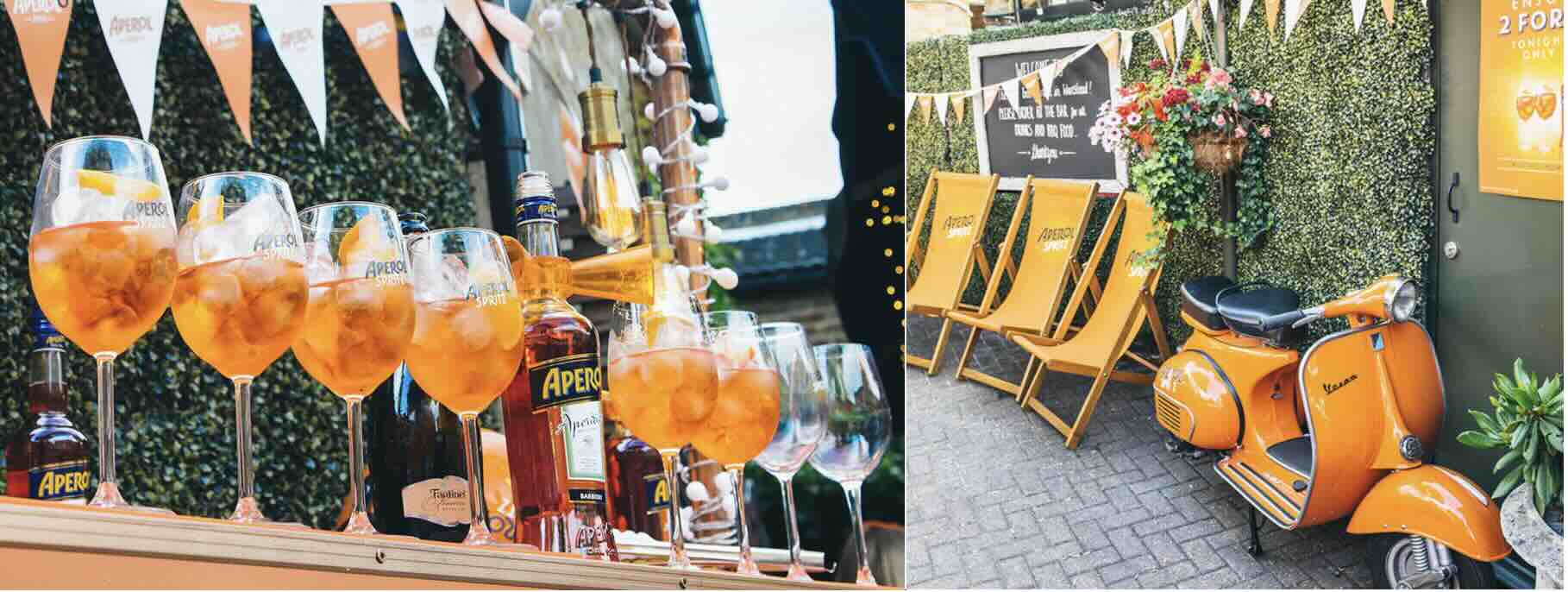
4. Act like a challenger
Pimms has traditionally been the summer long drink of choice in the UK. In particular, Pimms & Lemonade is strongly linked with the Wimbledon tennis tournament. The cheeky Aperol team tactically placed outdoor ads in key locations to “hijack” the tournament (see below), showing the spirit of a challenger brand to internal employees and also to retailers.
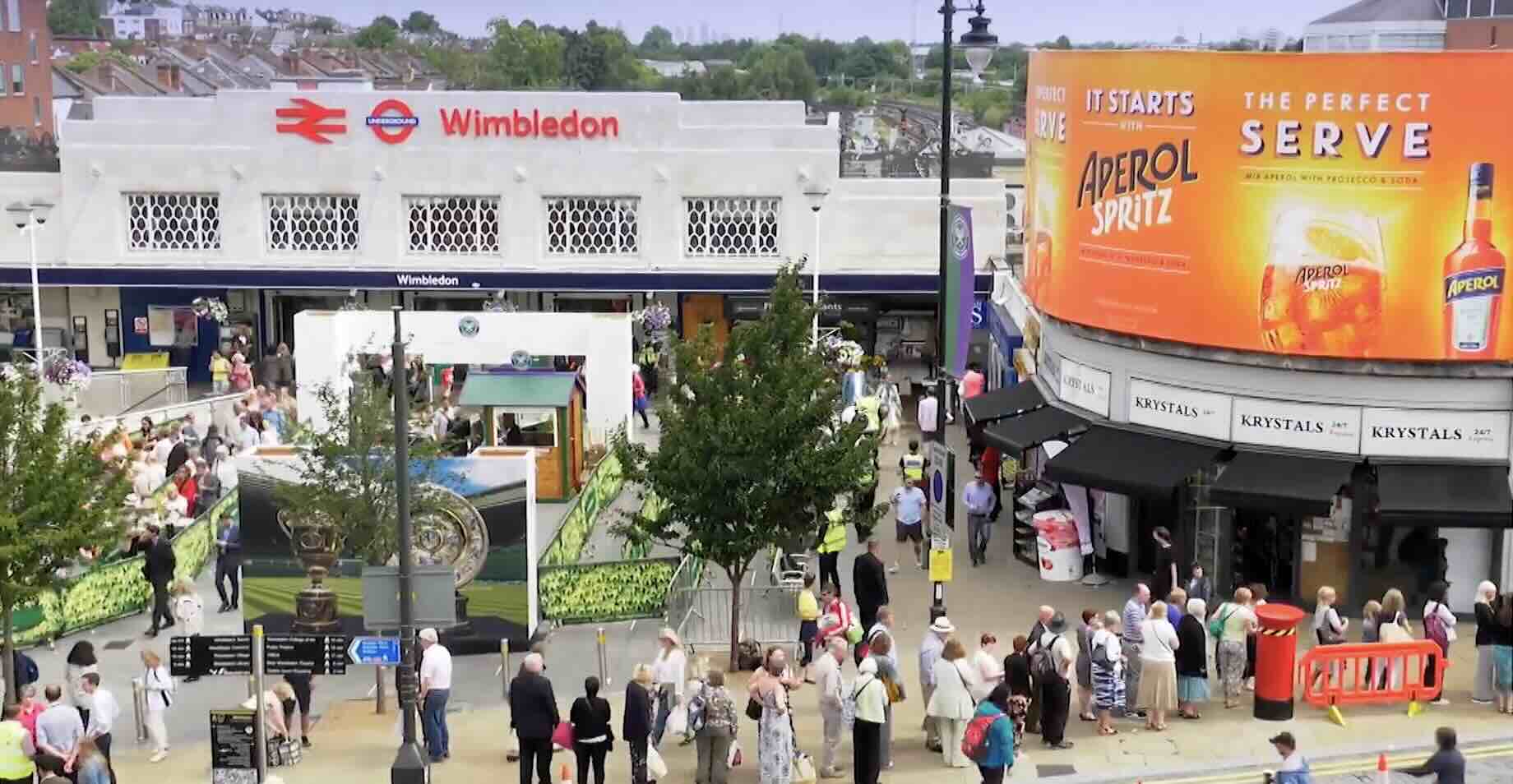
5. Define your market broadly
A key part of brand-led growth is defining your market broadly. This is clearly something Aperols’ brand owner Campari did from the start. Rather than seeing the challenge as only a direct share battle versus other long drinks, the team looked at the potential to convert people already drinking prosseco.“There are something like half a billion servings of prosecco in the UK each year and only a fraction of those have a splash of Aperol,” explained Marketing Director, Nick Williamson, in a 2018 Marketing Week interview (5). “So if we can go from 2% to maybe 4% or 5% of servings with Aperol, given the growth of prosecco too, then wow, you’re looking at a monster.”
6. Sharpen your spending
The Campari team harnessed a lot of creativity to grow the brand. But they were also smart in sharpening their spend to get the most from what was, at least in the early days, a limited budgett. “The business was using 12 different social and SMS channels, but now it knows what works it only uses a quarter of those“, revealed the Marketing Week article (5). “When we started out it was costing us maybe £15-20 per person to [drive someone to a pub or bar],” Nick Willamson explained. “Now Campari wouldn’t pay anything more than £2.50 per person to achieve that goal.“
7. Evolve using fresh consistency
The Aperol brand has evolved its marketing approach as the Aperol Spritz serve has become well known. In the last few years, communication has become more balanced between emotional “sizzle” and product “sausage”. The rather strangely titled Together we Joy campaign captures the spirit of happiness linked to a shared Aperol moment. Consistency is maintained by always featuring in a hero role the distinctive orange drink and also orange accessories (see example below with orange hat, dress and record).
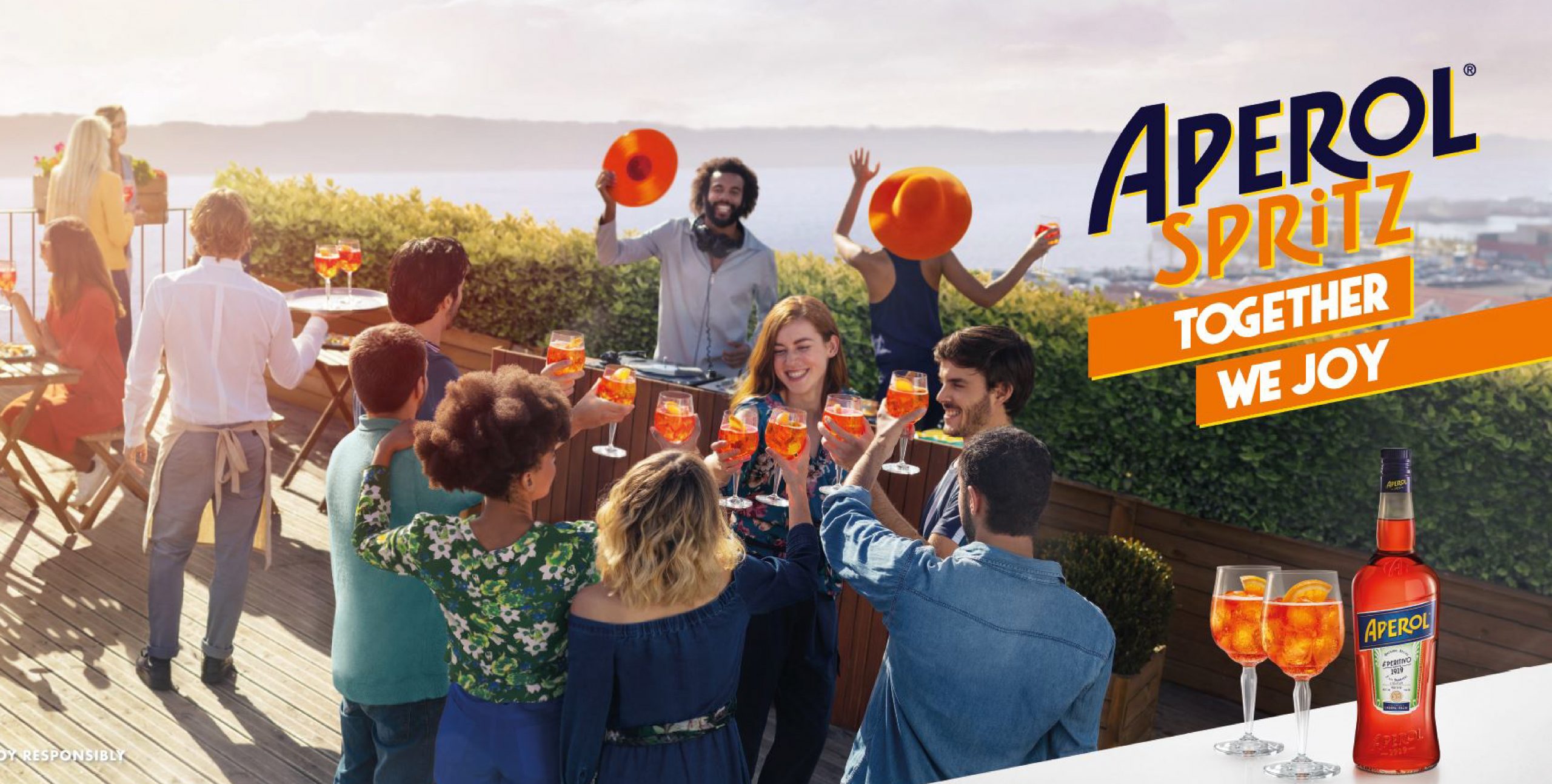
In conclusion, the Aperol brand is a marketing masterclass in amplifying distinctive brand assets and loading them with emotional meaning, with smart media planning and consistent investment used to drive awareness and trial.
Now, the sun is out in the garden and all this writing has made me thirsty. Its Aperol spritz-o-clock. Cheers!
Sources:
(3) Brand case study
(4) Brand experience
(5) Interview with UK Campari Marketing Director, Nick Williamson


